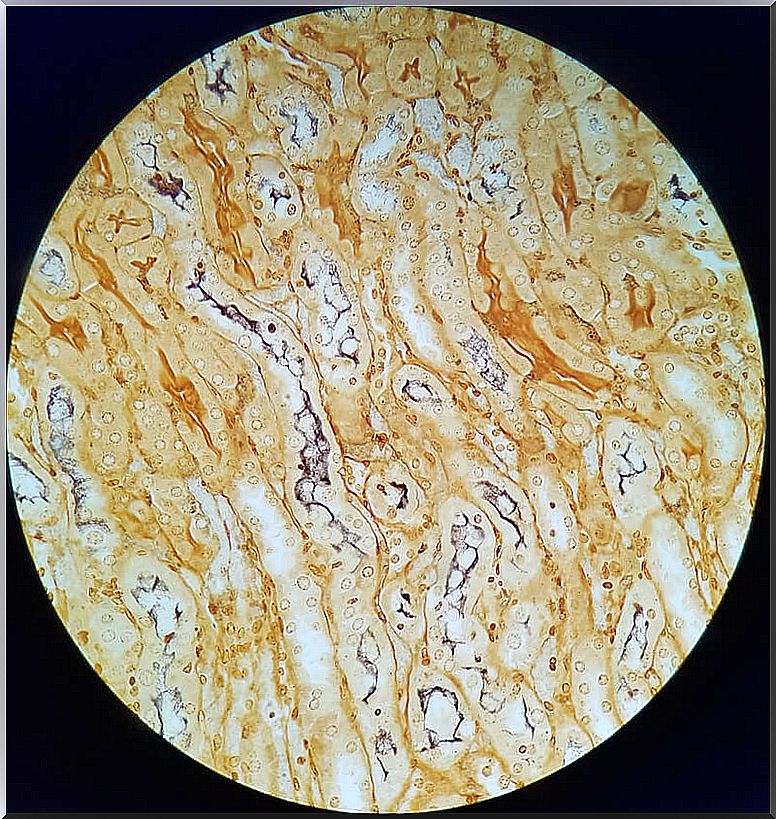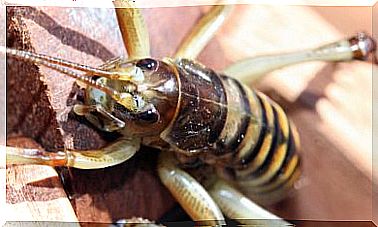Leptospirosis In Cats: Symptoms And Treatment

Leptospirosis in cats is a zoonotic disease of bacterial origin. It is currently considered an emerging infectious disease in humans and dogs.
However, there are a variety of wild and domestic animals – as is the case in cats – that, being infested, may not suffer from the symptoms of the disease. In these cases it is said that they are subclinically infected.
These disease-carrying species serve as reservoirs for the bacteria and are a potential source of infection for incidental hosts and humans.
What we should know about the causative agent: leptospira
Zoonotic diseases are those that can be transmitted between different species of mammals. Thus, they are diseases that can be spread between humans and other kinds of animals.
To date, a total of 22 Leptospira species have been identified. Of these, 13 can cause the disease in humans.
Leptospira species are also classified according to their agglutination reaction by sera that possess antibodies that recognize the bacteria. This classification is called serotypes. So far, around 300 pathogenic Leptospira serotypes are recognized .
The shape of this bacterium is very characteristic: its appearance is made of thin spirals. Usually one or both ends of the body are hooked.

This bacterium enters the body by contact. It penetrates the skin and mucous membranes thanks to the production of an enzyme that alters the permeability of the connective tissue. Specifically, it digests the hyaluronic acid content to facilitate invasion.
Leptospirosis in Cats: How is the Bacteria Spread?
The bacteria are shed in the urine of infected animals. Infected urine can contaminate surface waters such as swamps, streams, and rivers. In this niche, the bacteria can survive for long periods, up to several months. Thus, the disease is often transmitted by water.
Cats can acquire the infection directly or indirectly. In the case of the indirect route, they can become infected by having eaten a wild animal that has drunk the infected water.
When it occurs directly, leptospirosis in cats is acquired by contact with infected urine from other infected animals that cohabit with the feline. They can also be spread by drinking infected water that contains the Leptospira spirochete .
After penetration of mucous membranes or skin, leptospires multiply rapidly in the blood. The bacteria can invade many organs, especially the kidney, in which leptospires can persist and spread through urine for months or years.
Signs and Symptoms of Leptospirosis in Cats
When testing infected cats, the bacteria have been found to be present in urine and blood. These studies have determined that leptospirosis in cats produces only mild clinical signs.

Although clinical signs appear rarely in cats, leptospirosis in cats does cause kidney and liver inflammation. Recent studies have shown a possible association between feline chronic kidney disease and Leptospira spp infection .
Disease management
As in dogs, the treatment of sick cats will depend on the severity of the clinical signs. In general, the treatment of leptospirosis in cats consists of antibiotics and supportive therapy.
In apparently healthy cats that shed leptospires in the urine, treatment with doxycycline – 5 mg / kg every 12 hours for three weeks – should be started to eliminate their carrier status.
Prevention
- Unfortunately, there is no vaccine available to prevent leptospirosis in cats.
- The only way to prevent cats from becoming infected is to prevent them from feeding on potentially infected rodents. Also that there is to avoid that they come in contact with stagnant water.
- Cats kept indoors have a very low risk of infection.
Consult your veterinarian to rule out leptospirosis in cats. Remember that, even if your cat does not show symptoms of the disease, it can be a source of contagion for humans and dogs in its environment.
We cannot imagine life without our kittens. However, the fact that cats can act as a reservoir for Leptospira in the domestic space has become increasingly important . For this reason, it is highly recommended to screen cats for leptospirosis.
There are specialized tests available to identify bacteria in blood, urine, or tissues. Additionally, tests can be performed to detect the presence of antibodies against the bacteria in the feline’s blood.









